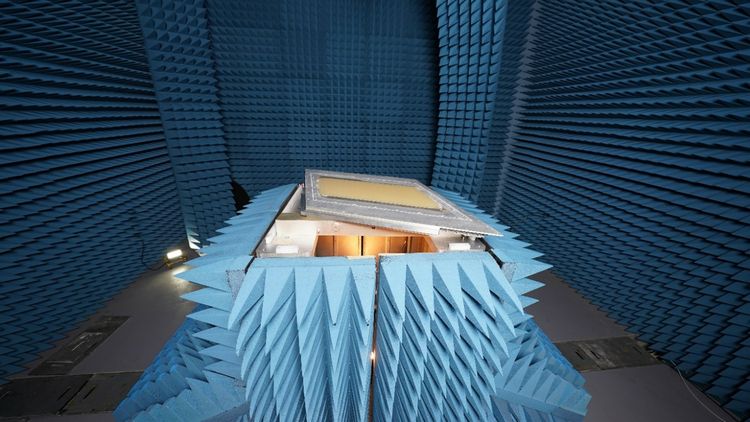Northrop Grumman has completed “dozens” of flight tests in a “first flight campaign” with its new Electronically-Scanned Multifunction Reconfigurable Integrated Sensor, which it wants to field on multiple platforms to include Collaborative Combat Aircraft drones and potentially the Next-Generation Air Dominance fighter, the company said Aug. 20.
The company announced EMRIS in February 2023, saying the technology could simultaneously conduct radar operations, communications, and electronic warfare, and would be small enough to be applicable to a wide range of airborne systems. An ultra-wideband system, it is intended to be rapidly reconfigurable, and employ software updates inflight, Northrop said.
“These flights, completed in partnership with government partners and on a government-provided aircraft, are the next stage of technology maturation for EMRIS,” Northrop said. The flight demonstrated “the open architecture nature of EMRIS by using third-party integration and operation.” The company could not immediately identify the test aircraft.
New software “was rapidly deployed during flights, demonstrating the reconfigurable nature of the sensor,” Northrop added. Northrop developed the technology in partnership with the Defense Advanced Research Projects Agency.
The company has previously said the aperture and related hardware is compact enough to be mounted in the nose or on the wings of an aircraft or even a munition.
Krys Moen, Northrop’s vice president for advanced mission capabilities, said the “dozens of successful flights with EMRIS demonstrated the ability to reduce development timelines and lower program costs” by leveraging the company’s partnerships with all the U.S. military services. The applications include “crewed and uncrewed platforms.”
The radar sensor in the system is an active, electronically-scanned array radar developed under DARPA’s “Arrays on Commercial Timescales” program, combined with government open architecture standards. This allows it to perform multiple radio frequency (RF) functions simultaneously. Northrop said it was designed using “common building blocks and software containerization” which will allow for “rapid, cost-effective production.”
AESA radars are already fielded on several kinds of U.S. Air Force aircraft, including the F-35, F-22, and F-16. Northrop also builds the Multirole Electronically Scanned Array radar that goes on the back of the E-7 Wedgetail, which will become the Air Force’s new airborne early warning and control aircraft.
The company said it is proceeding with testing on a second EMRIS array, and this phase will “demonstrate its scalable nature by fabricating two smaller EMRIS apertures for lower cost and size-constrained application demonstrations.” It was not immediately able to say whether a further flight test campaign is planned or whether the system is being configured for a particular platform or launch customer.
“As part of EMRIS’ flights, Northrop Grumman demonstrated the ability to quickly leverage technologies developed for other programs to adapt multiple fielded capabilities into EMRIS,” the company said, but it did not disclose what those adapted systems were.
Northrop said EMRIS demonstrates “the value of a product line designed from the beginning to leverage open, scalable software along with modular digital building blocks to enable a common sensor baseline.” The technology is applicable to “a wide range of existing platform upgrades as well as new, emerging opportunities.”


